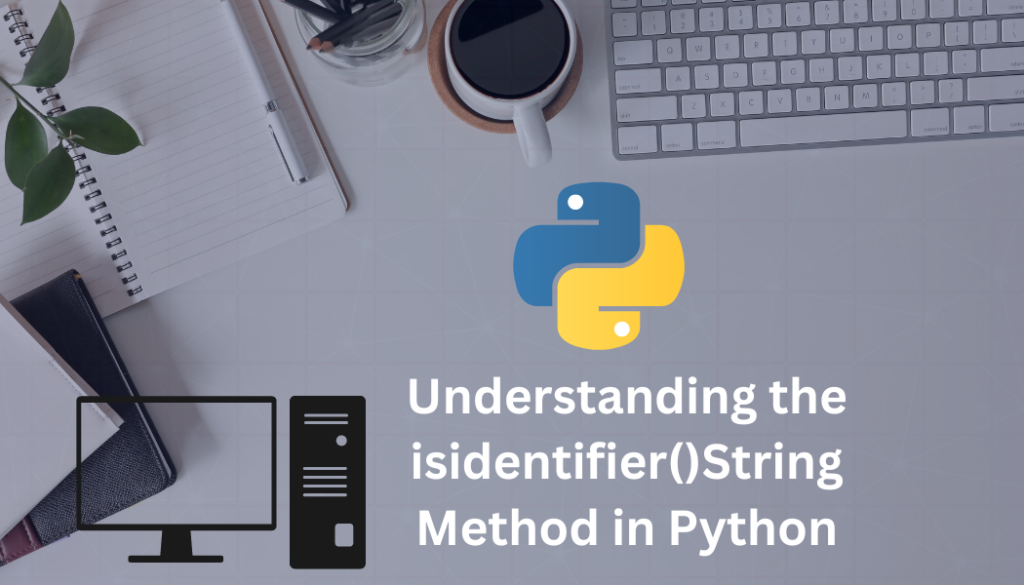
Introduction:
String manipulation is a vital part of Python programming, and Python provides numerous built-in methods to handle strings effectively. One such method is isidentifier(), which allows you to determine if a string is a valid Python identifier. In this blog post, we will explore the isidentifier() string method in Python, understand its functionality, and provide illustrative examples to demonstrate its usage.
The isidentifier() method in Python is designed to check whether a string is a valid identifier. An identifier is a sequence of alphanumeric characters (letters or digits) and underscores (_) that does not start with a digit. It returns True if the string is a valid identifier and False otherwise.
Syntax:
The syntax for the isidentifier() method is as follows:
string.isidentifier()Now, let’s dive into practical examples to understand how the isidentifier() method works.
Example 1:
Basic Usage
text = "my_variable"
result = text.isidentifier()
print(result)Output:
TrueExplanation: In this example, the isidentifier() method is used to validate the string "my_variable". Since it consists of alphanumeric characters and underscores, and does not start with a digit, the method returns True.
Example 2:
Including Non-Valid Identifiers
text = "123variable"
result = text.isidentifier()
print(result)Output:
FalseExplanation: In this example, the isidentifier() method is used to check the string "123variable". Since it starts with a digit, it is not a valid identifier, and the method returns False.
Example 3:
Empty String
text = ""
result = text.isidentifier()
print(result)Output:
FalseExplanation: In this example, the isidentifier() method is used to validate an empty string. As an empty string cannot be a valid identifier, the method returns False.
Example 4:
Reserved Keyword
text = "for"
result = text.isidentifier()
print(result)Output:
TrueExplanation: In this example, the isidentifier() method is used to validate the string "for". Although “for” is a reserved keyword in Python, it is still considered a valid identifier, and the method returns True.
Conclusion:
The isidentifier() method in Python is a powerful tool for checking whether a string is a valid identifier. By utilizing this method, you can easily ensure that a string adheres to Python’s identifier naming rules. Understanding the behavior and usage of the isidentifier() method allows you to develop robust string validation mechanisms in Python. Incorporate the isidentifier() method into your Python programs to enhance the reliability and integrity of string manipulation tasks, particularly when working with user-defined variable names or identifiers. Experiment with different strings, including reserved keywords and non-valid identifiers, to fully explore the capabilities of the isidentifier() method and elevate your Python programming skills.
Happy Coding!
The Education Machine

Leave a Reply